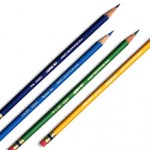Heaping Pennies to Teach Group Cohesion
This experiment portrays the idea that group cohesion is stronger than the individual members who form the group.
Essential Question: What is group cohesion? What is a team?
Guiding Questions:
- For what reasons do people form groups (substitute teams for groups if you choose)?
- Generate a list of platforms used where people make connections to form groups.
- Describe in detail how groups are formed and made.
- Explain specifically what the group accomplishes.
- Describe the type of energy needed to fuel the existence of the group.
- In what ways do people reflect upon their experiences of being part of the group.
Interdisciplinary Connections
- Social Studies: You can use Heaping Pennies to kick off a unit on how group cohesion affected the success of the Underground Railroad, creating labor unions, or revolutions throughout history.
- ELA: You can use Heaping Pennies to teach King Arthur and the Knights of the Round Table or books that discuss why gangs are formed, etc.
- Science: You can teach the attributes of cohesion and polar molecules.
- The Arts: Sometimes the group is stronger than its individual parts, eg. Beatles, Broadway Show, Community Mural
- Sports: You can use this to show the effects of team building on the students’ ability to play well.
- What other connections can you add to this list?
Materials
Eyedroppers & Water
Pennies
Toothpicks
Liquid Soap
Paper Napkins
Experiment
- Have each student place a penny on top of a paper napkin. (Modification: can be done by cooperative groups or in front of the class as a demonstration with students coming forward. However, we recommend each student or small group have this hands-on experience to move it from short-term to long-term memory.)
- Have students predict how many drops of water it will take to form a dome on top of the penny.
- Using the eyedropper, students begin the exercise by placing water droplets on the penny. They count as they go along. They should continue this until the dome bursts. Watch their excitement grow as they count numbers into the 30s and 40s.
- To prove that outside influences can affect the strength of group cohesion, repeat the exercise making a large dome, but not popped.
- Take the toothpick and dip it into the liquid soap. Prick the dome of water with the toothpick. The liquid soap breaks the surface tension of the water.
- Reflect with students and make the connections between the experiment and your specific content.
Explanation: The cohesion of molecules pulls the top of the water as if it were skin. H2O is a polar molecule, attracting other molecules like itself. In other words, the oxygen from the second molecule is attracted to the hydrogens from the first molecule. The hydrogens have a positive charge whereas the oxygen has a negative charge.
An alternate experiment consists of taking a glass of water and shaking pepper on it. Once again, take the toothpick dipped in liquid soap and prick the surface of the water. Notice how the pepper repels the area.

Please share with us your experience of using Heaping Pennies. Have you used it in a different content area? In what other ways can it be used? Please describe the details of how it can help students visualize “bonding”.
Andi Stix is an educational consultant & coach who specializes in differentiation, interactive learning, writing across the curriculum, classroom coaching, and gifted education. For further information on her specialties or social media, please email her on the Contact page.






